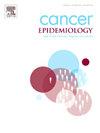HPV-unrelated oropharyngeal cancer has elevated risk of synchronous hepatobiliary second primary malignancies compared to HPV-related oropharyngeal cancer: a population-based study from SEER
IF 2.3
3区 医学
Q3 ONCOLOGY
引用次数: 0
Abstract
Background
Our aim was to compare risk of synchronous and metachronous hepatobiliary second primary malignancies (SPMs) in survivors of human papillomavirus (HPV)-related [i.e., p16(+)] and HPV-unrelated [i.e., p16(-)] oropharyngeal cancer (OPC).
Methods
A retrospective study was conducted for cases with OPC diagnosis during years 2018–2021 who had known p16 status using data of USA from Surveillance, Epidemiology, and End Results (SEER) Program [Incidence - SEER Research Limited-Field Data, 22 Registries (excl IL and MA), Nov 2023 Sub (2000–2021)]. In the statistical analyses, death was considered as a competing event for the development of a hepatobiliary SPM. Bias due to unbalanced baseline characteristics was eliminated by adjustments using propensity score and inverse probability of treatment weighting (IPTW). Risk of development of a hepatobiliary SPM was assessed using propensity-score-adjusted time-varying Cox proportional hazard regression [adjusted hazard ratio (aHR) with 95 % confidence interval (95 % CI)].
Results
Overall, 25759 cases with tumor status of p16(-) (6353) and p16(+) (19406) with median (interquartile range) follow-up times of 14 (6, 26) and 20 (9, 32) months, respectively, were included. From these, 48 had a hepatobiliary SPM. Compared to HPV-related OPC, HPV-unrelated OPC had significantly elevated risk of synchronous all hepatobiliary SPMs [aHR= 2.39 (95 % CI, 1.11–5.15); P = 0.026] and synchronous hepatocellular carcinoma (HCC) SPM [aHR= 2.86 (95 % CI, 1.18–6.92); P = 0.020], but not metachronous ones. Curves of cumulative incidence of a hepatobiliary (or HCC) SPM and cumulative survival probability for those with a hepatobiliary SPM, both stratified by p16 status and adjusted by IPTW, were generated. The median survival time among patients with a hepatobiliary SPM was shorter for HPV-unrelated OPC (0.8 years) compared to HPV-related OPC (2.6 years).
Conclusion
The observed elevated risk was likely due to heavy alcohol and tobacco use and the protective role of HPV infection against HCC development in carriers of hepatitis C virus.
与hpv相关的口咽癌相比,与hpv无关的口咽癌发生同步肝胆第二原发恶性肿瘤的风险更高:来自SEER的一项基于人群的研究
背景:我们的目的是比较人乳头瘤病毒(HPV)相关[即p16(+)]和HPV无关[即p16(-)]口咽癌(OPC)幸存者同步和异时性肝胆第二原发恶性肿瘤(SPMs)的风险。方法采用美国监测、流行病学和最终结果(SEER)项目(发病率- SEER研究有限领域数据,22个登记处(不包括IL和MA), 2023年11月Sub(2000-2021))的数据,对2018-2021年诊断为OPC的已知p16状态的病例进行回顾性研究。在统计分析中,死亡被认为是肝胆SPM发展的一个竞争事件。通过使用倾向评分和治疗加权逆概率(IPTW)进行调整,消除了不平衡基线特征造成的偏倚。采用倾向评分校正时变Cox比例风险回归[校正风险比(aHR),置信区间为95 %(95 % CI)]评估肝胆SPM发生的风险。结果共纳入肿瘤状态为p16(-)(6353)和p16(+)(19406)的25759例,中位(四分位间距)随访时间分别为14(6,26)个月和20(9,32)个月。其中48例为肝胆SPM。与hpv相关的OPC相比,hpv无关的OPC发生同步全肝胆SPMs的风险显著升高[aHR= 2.39(95 % CI, 1.11-5.15);P = 0.026],同步性肝细胞癌(HCC) SPM [aHR= 2.86(95 % CI, 1.18-6.92);P = 0.020],但不包括元同步。生成按p16状态分层并经IPTW校正的肝胆SPM累积发生率和肝胆SPM患者累积生存率曲线。与hpv无关的OPC的肝胆SPM患者的中位生存时间(0.8年)比hpv相关的OPC(2.6年)短。结论HPV感染对丙型肝炎病毒携带者HCC发展的保护作用可能与大量饮酒和吸烟有关。
本文章由计算机程序翻译,如有差异,请以英文原文为准。
求助全文
约1分钟内获得全文
求助全文
来源期刊

Cancer Epidemiology
医学-肿瘤学
CiteScore
4.50
自引率
3.80%
发文量
200
审稿时长
39 days
期刊介绍:
Cancer Epidemiology is dedicated to increasing understanding about cancer causes, prevention and control. The scope of the journal embraces all aspects of cancer epidemiology including:
• Descriptive epidemiology
• Studies of risk factors for disease initiation, development and prognosis
• Screening and early detection
• Prevention and control
• Methodological issues
The journal publishes original research articles (full length and short reports), systematic reviews and meta-analyses, editorials, commentaries and letters to the editor commenting on previously published research.
 求助内容:
求助内容: 应助结果提醒方式:
应助结果提醒方式:


